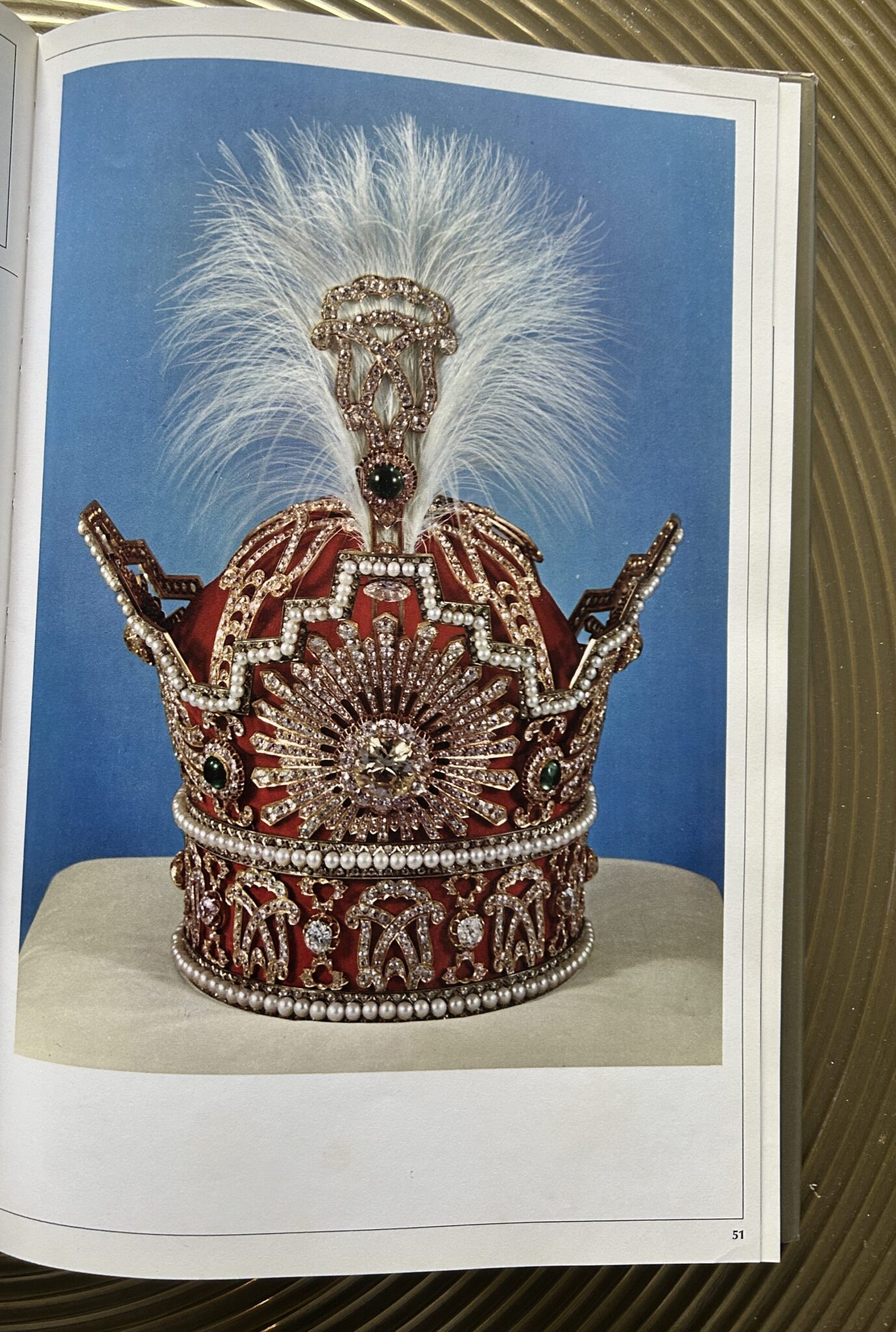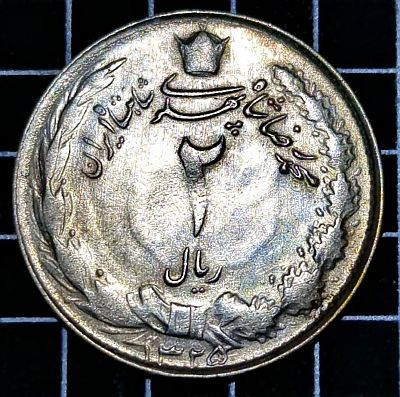An imperial looking coin from a historic nation
Iran

(The Pahlavi Crown, commissioned by Reza Shah in 1925. Image: TheZay.org)
Iran has been inhabited for a long time. Stone tools found in the region date back 800,000 years. We have previously looked at coins from some of the civilisations which have occupied modern-day Iran. These have included the Kingdom of Elymais, the Kushan Empire, and the Sasanian Empire. With the Sasanian’s came the start of the Islamic Empire or Caliphate; Iran has been an Islamic country ever since.
Jumping forward a milennium, the Qajar Dynasty was founded in the 1790s, under Agha Mohammad as “Shah” (essentially “King”). This dynasty lasted just over 125 years. In 1921, Iran’s only military force was the Cossack Brigade. Reza Khan, an officer, used his troops to support a coup against the government, and within four years had suppressed rebellions and established order. In 1925, a specially convened assembly formerly deposed Ahmad Shah, the last Qajar ruler, and named Reza as shah. He took the surname Pahlavi, the name we know the period by today. Under his leadership, Iran transformed into a modern, industrial, urbanised country, but not without tension.
By the mid-1930s Reza Shah’s dictatorial style of rule caused dissatisfaction in Iran, particularly among religious and intellectual elites. He had instructed that the country be known as Iran and not Persia anymore. He argued that Persia was the name of one Iranian ethnic group and not all of them and that the country had also been known as Iran for thousands of years.
Iran is a major oil producing nation. Britain owned the Anglo-Iranian Oil Company, which controlled oil in the country. Today we know the company as British Petroleum (BP); a history which itself is worthy of its own post (someone please find me a BP token or medallion and I’ll write it up!). Trying to minimise British and USSR influence, when technical expertise was needed from abroad, Reza Shah looked to Germany, France, Italy and other European countries. This proved problematic come WWII. Although declared neutral, Britain and USSR believed German spies had infiltrated the country. They invaded Iran and sent Reza Shah into exile in South Africa, where he died in 1944. His son, Mohammed Reza Pahlavi, was allowed to take over the throne.
Britain and the USSR withdrew from Iran following WWII, and the Pahlavi dynasty continued under Mohammed until 1979 when the monarchy was abolished.
Obverse

The obverse of the coin features the ruler’s name, Muhammad Reza Shah Pahlavi, over the denomination, all in Arabic. We’ve previous covered Arabic Numerals when looking at this Egyptian coin.
One point not mentioned in at least Numista’s description of the coin, is the design above the Shah’s name. The Pahlavi Crown, pictured at the top of this post. Weighing 2kg (4lb), the crown was made for Reza Khan’s coronation in 1926. It contains 3,380 diamonds, with a central 60 karat yellow diamond, as well as pearls and emeralds. The crown is today kept as part of Iran’s National Jewels.
At the bottom of the design is the date, 1325, written as: ۱۳۲۵ in the Persian calendar, which was 1946.
Reverse

The reverse features the lion and sun, traditional symbols of Iran, the lion holding a sabre. In the ancient Near East, the lion and sun were symbols of kingship and divine power. Iranian mythology regards the lion (Persian shir) as the king of animals, a symbol of power and kingship. The sun (Persian: khorsid) was associated with Mithra, the ancient Iranian god of light, sun, seasons, pact and contract.
Again, the Pahlavi Crown tops the design. Since 1932, the Rial has been divided into 100 Dinars. Throughout most of the Pahlavi dynasty, coins looked very much like this piece – the ruler and denomination on one side, and the lion and sun on the other, in both cases surrounded by branches and topped with the crown. This particular coin was issued from 1943 – 1951 and is .600 silver (that is, 60% pure silver). The coin is only 22mm diameter and 3.2g, which works out to a silver content just under 2 grams. Like many countries, Iran moved entirely to base metal coinage. This series of coins, up to 1951 were the last circulating coins to use silver. In 1978, to mark the 2,500 anniversary of the Persian Empire, a series of non-circulating silver coins were issued. One of my favoutie designs is this 50 Rials, featuring a winged lion with ram antlers against a brick design:

(1978 Iran 50 Rials, image: Numista)


Leave a Reply